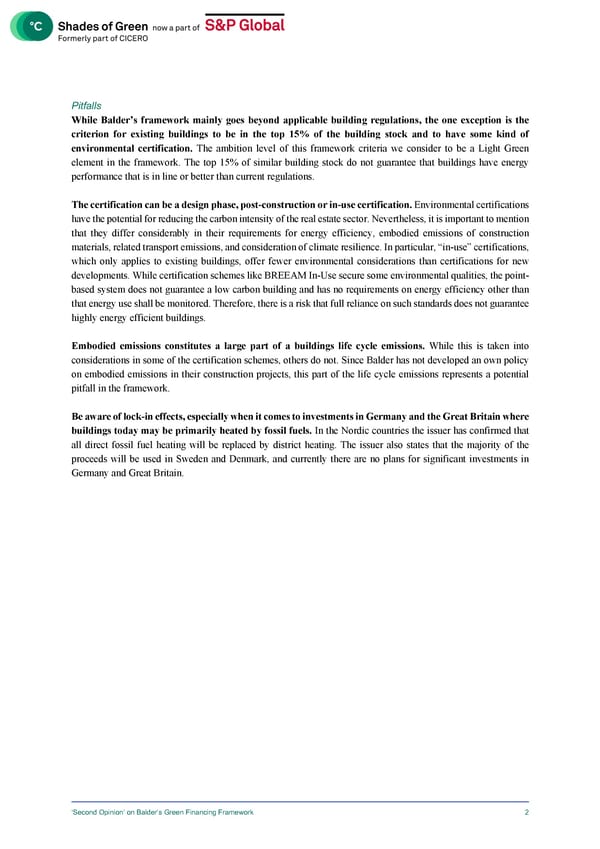‘Second Opinion’ on Balder ’s Green Financing Framework 2 P itfalls While Balder’s framework mainly goes beyond applicable building regulations, the one exception is the criterion for existing buildings to be in the top 15% of the building stock and to have some kind of environmental certification. The ambition le vel of this framework criteria we consider to be a Light Green element in the framework . T he top 15% of similar building stock do not guarantee that buildings have energy performance that is in line or better than current regulations . The certification ca n be a design phase, post - construction or in - use certification. Environmental certifications have the potential for reducing the carbon intensity of the real estate sector. Nevertheless , it is important to mention that they differ considerably in their requirements for energy efficiency, embodied emissions of construction materials, related transport emissions, and consideration of climate resilience. In particular, “in - use” certifications , which only applies to existing buildings, offer fewer envi ronmental considerations than certifications for new developments. While certification schemes like BREEAM In - Use secure some environmental qualities, the point - based system does not guarantee a low carbon building and has no requirements on energy efficie ncy other than that energy use shall be monitored. Therefore, there is a risk that full reliance on such standards does not guarantee highly energy efficient buildings. Embodied emissions constitutes a large part of a buildings life cycle emissions. While this is taken into considerations in some of the certification schemes, others do not. Since Balder has not developed an own policy on embodied emissions in their construction projects, this part of the life cycle emissions represents a potential pitfall in the framework. Be aware of lock - in effects, especially when it comes to investments in Germany and the Great Britain where buildings today may be primarily heated by fossil fuels. In the Nordic countries the issuer has confirmed that all direct fossil fuel heating will be replaced by district heating . The issuer also states that the majority of the proceeds will be used in Sweden and Denmark, and currently there are no plans for significant investments in Germany and Great Britain.
 Fastighets AB Balder Page 1 Page 3
Fastighets AB Balder Page 1 Page 3